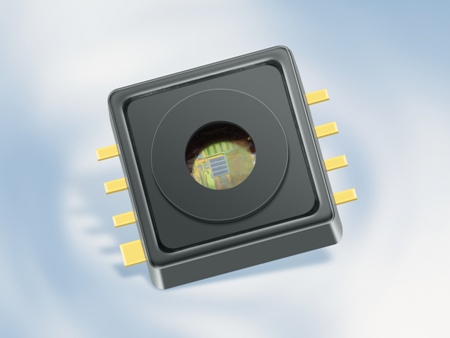By Kalwinder KaurJun 22 2012
Infineon Technologies, a provider of system and semiconductor solutions for mobility, security and energy efficiency, has announced that its KP200 pressure sensor is being used to increase the protection for vehicle occupants and pedestrians.
 The KP200 pressure sensor improves the impact protection for pedestrians and is now used by the automotive system supplier Continental for safety system in car bumpers.
The KP200 pressure sensor improves the impact protection for pedestrians and is now used by the automotive system supplier Continental for safety system in car bumpers.
Continental, an automotive system supplier, has partnered with a prominent automobile manufacturer to develop a new pedestrian protection system. The front bumper of the vehicle like car has an air hose built into it. Two KP200 pressure sensors are fixed at each end. When an impact occurs, the sensors measure the variation of air pressure in the air hose. The data is evaluated in real-time and transmitted to a central airbag control unit. The sensor records and prepares the data in around 40 µs. Based on the data, the hood is raised by a mechanism and reduces the impact that may occur on the pedestrian.
The KP200 sensor chip operates within 4.5 V and 11 V and within temperatures ranging from -40 °C to 85 °C. It can function under standard pressure range of 50.9 kPa to 126.5 kPa. It is compatible with the automotive standard, AK-LV 29. The sensor modulates the data on the power supply line for communicating with the central computer through the PSI5 protocol. The sensor consumes 8 mA of current and demonstrates sensitivity of 20.48 LSB per percent pressure change. Infineon’s pressure sensors were chosen as they could measure pressure under any ambient air pressure conditions.
Automobile manufacturers are presently utilizing the Infineon KP200 pressure sensor in the side airbags of cars. The evaluation ASIC and the sensor are integrated. When impact occurs, the pressure pulse is measured and the data is sent to a central control unit, which activates the airbags.
Disclaimer: The views expressed here are those of the author expressed in their private capacity and do not necessarily represent the views of AZoM.com Limited T/A AZoNetwork the owner and operator of this website. This disclaimer forms part of the Terms and conditions of use of this website.